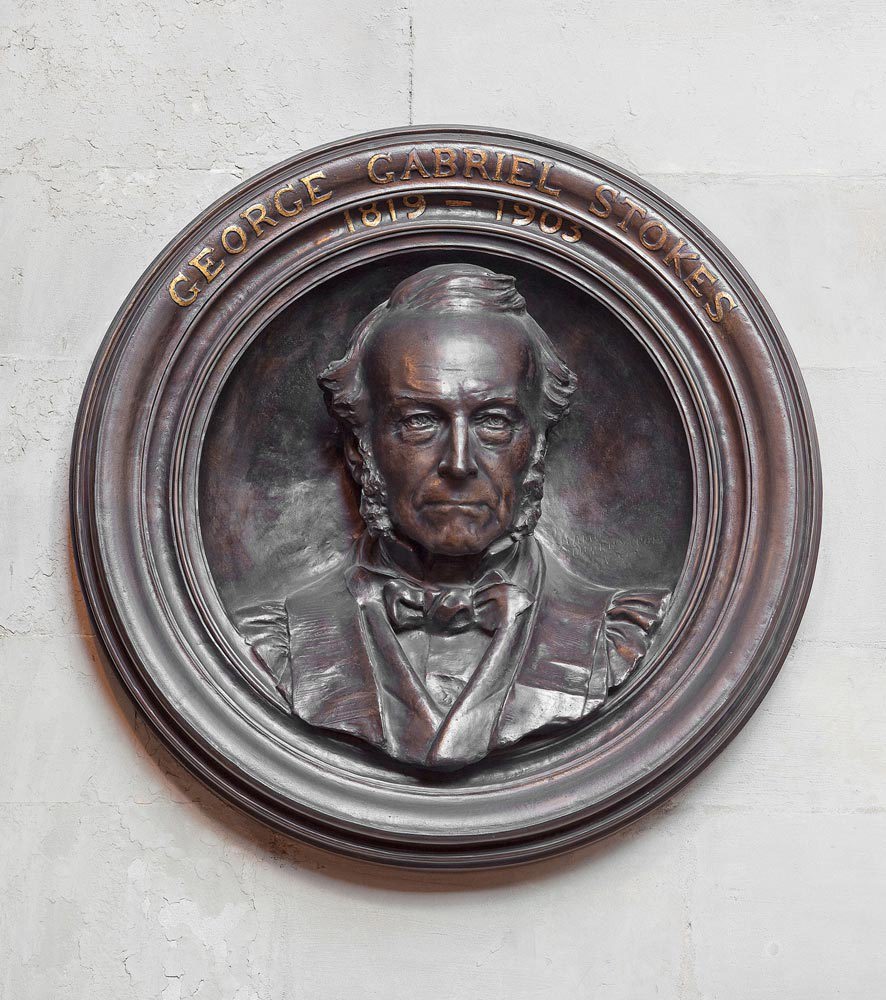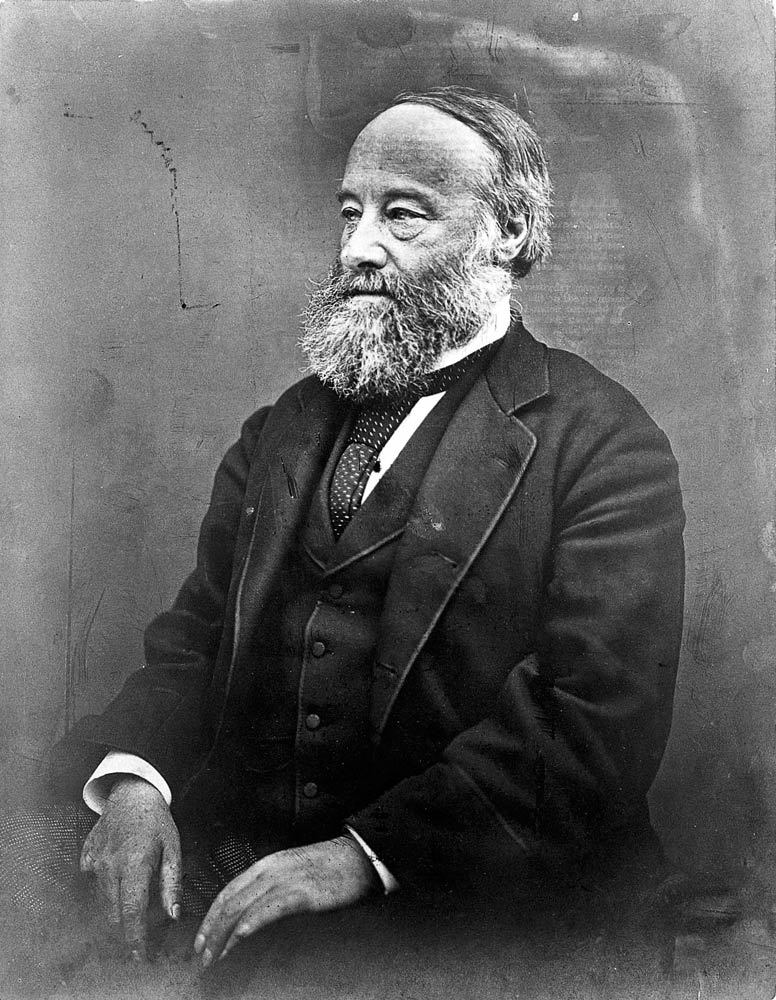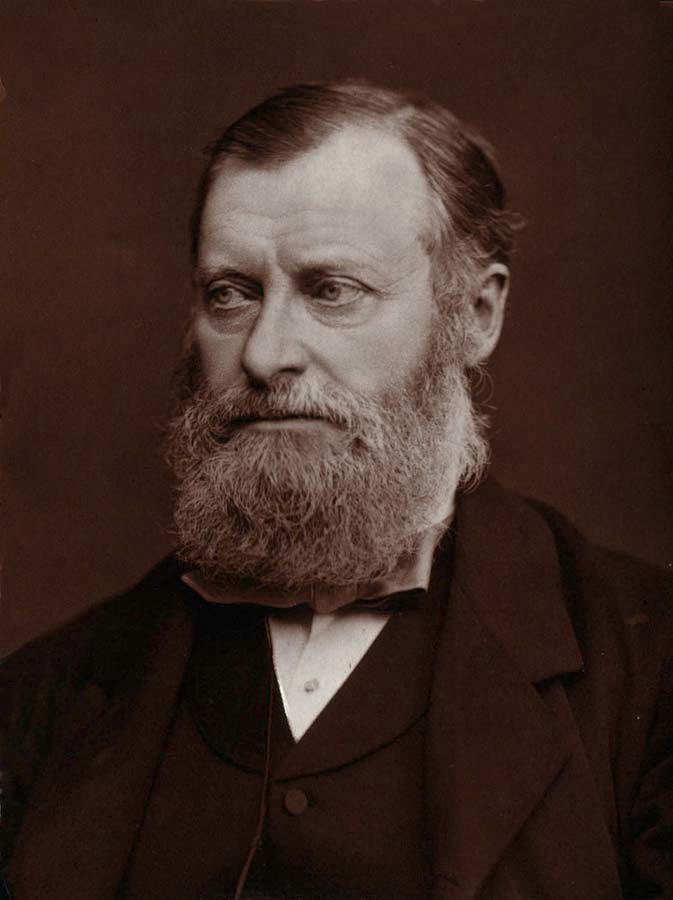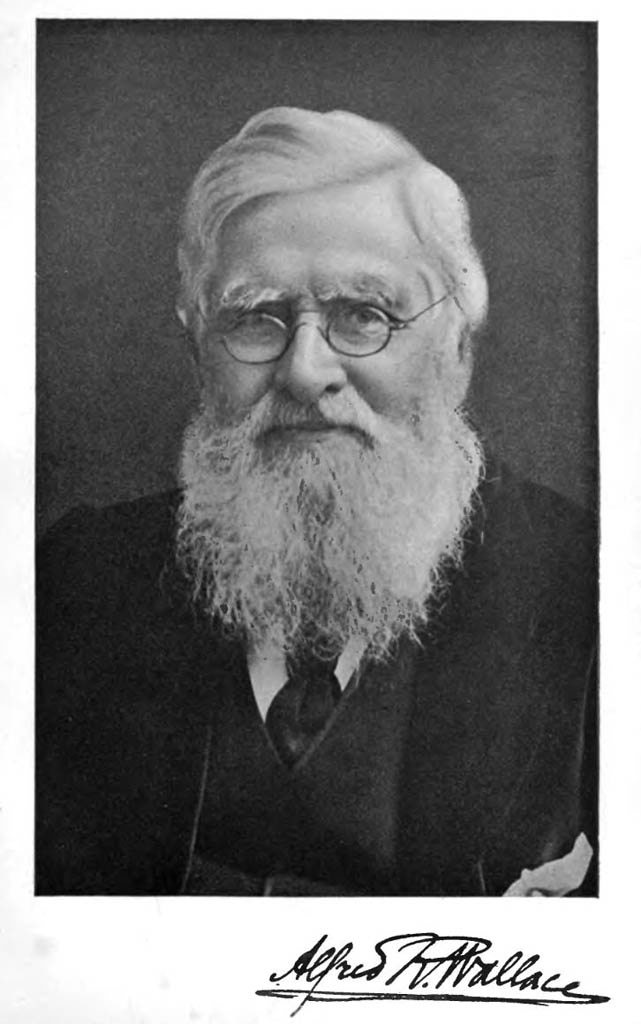John Couch Adams
John Couch Adams F.R.S., mathematician and astronomer, has a memorial in the north choir aisle of Westminster Abbey, near to memorials to Darwin and G.G. Stokes and not far from Newton's grave. It consists of a white marble roundel by Albert Bruce-Joy with a profile bust in relief, facing left. It was unveiled in May 1895. The Latin inscription can be translated:
"John Couch Adams. He demonstrated the planet Neptune by calculation in the year of Grace 1845".
His Life
He was born on 5th June 1819 near Launceston in Cornwall, one of four sons and three daughters of Thomas Adams, a poor farmer, and his wife Tabitha (Grylls), whose uncle was John Couch. Of his brothers Thomas became a missionary, George was a farmer, and William Grylls Adams F.R.S. (1836-1915) was a professor of astronomy.
Brought up in a Wesleyan family he was educated at his cousin's school and won a scholarship to St John's College, Cambridge. His passion was astronomy and he is best remembered for predicting the existence of a major planet in the solar system, Neptune, before it could be observed by any telescope. He also worked on terrestrial magnetism and the theory of the moon's motions, as well as on the asteroids seen as meteor showers (the Leonids) in November in England. He declined a knighthood, as well as the post of astronomer royal.
On 2nd May 1863 he married Elizabeth Bruce (died 1919) but they had no children. He became Director of Cambridge Observatory and died on 21st January 1892. Although Queen Victoria wished him to be buried in the Abbey he was laid to rest at St Giles cemetery near the observatory. He has a memorial at Truro cathedral.
Further Reading
Oxford Dictionary of National Biography 2004 (also an entry for his brother William)
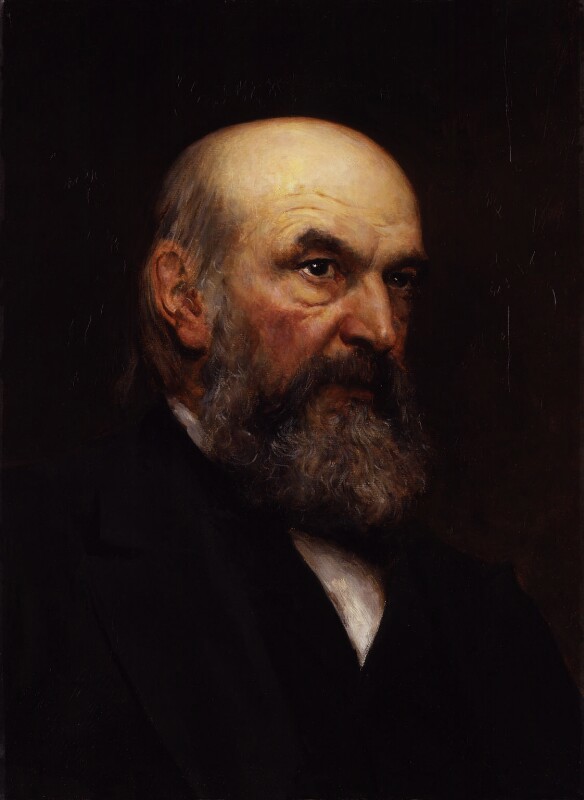
© National Portrait Gallery, London [Creative Commons CC BY-NC-ND 3.0]

This image can be purchased from Westminster Abbey Library
Image © 2024 Dean and Chapter of Westminster
